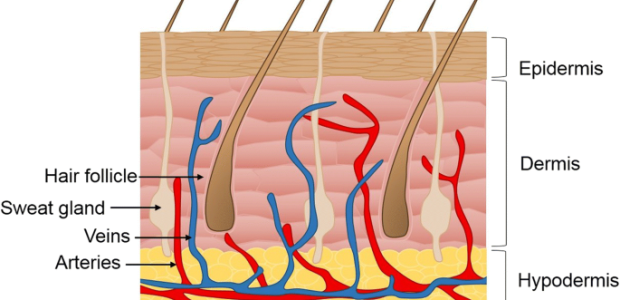
In the recent past, specifically 2022, the biomaterial wound dressing market soared in prominence, achieving a remarkable valuation of USD 438.1 million. This impressive feat was not a mere accident; it was nurtured by a rapidly escalating global recognition of the transformative advantages that biomaterial wound dressings offer. Now, as we gaze forward, the market showcases a resilience and ambition, forecasting a growth trajectory with a CAGR of 9.54% from 2023 to 2031, aspiring to reach the USD 991.5 million mark by 2031.
A Panoramic Overview
The innovative intersection of biology and material science in healthcare has bestowed us with biomaterial wound dressings. As an upgrade to traditional wound care, these dressings symbolize a leap forward, particularly when addressing wounds that have proven stubborn or resistant to conventional treatments. Leveraging state-of-the-art materials, these dressings are synergistically designed to work in harmony with the body, ensuring faster and safer healing experiences for patients.
Delving into the Integral Components
To understand the essence of biomaterial wound dressings, one must grasp its two foundational pillars. First, we encounter natural biomaterials, a category that includes collagen, chitosan, and alginate. Revered for their impeccable biocompatibility, these materials gracefully decompose in an organic manner, ensuring no harmful residues are left behind. On the flip side, we have synthetic biomaterials. Materials such as polyurethane and silicone stand out in this category, praised for their durability, flexibility, and long-standing performance in diverse wound environments.
Market Segmentation Unwrapped
Venturing into the vast expanses of the biomaterial wound dressing market, we see it fracturing into distinct segments, primarily based on product type, utility, and geographical spread. These segments narrate intricate tales of regional healthcare needs, path-breaking product innovations, and the adaptability of these products in catering to various wound care demands across different patient demographics.
The Multifaceted Benefits and Expansive Applications
What truly cements the position of biomaterial wound dressings in modern healthcare are the myriad benefits they unfurl. From empowering health professionals with tools for rapid wound healing to masterfully managing wound moisture and aggressively warding off potential infections, these dressings are undeniably at the vanguard of contemporary wound care. Their versatile application further solidifies their stature, making them indispensable in scenarios ranging from intricate post-operative care, nuanced burn treatments, to managing chronic ulcers.
The Wind in the Sails: Factors Driving Market Growth
A confluence of global phenomena and medical advancements acts as the catalyst propelling the biomaterial wound dressing market. An increasing elderly population worldwide, the disconcerting rise in diseases like diabetes, coupled with monumental leaps in medical and biotechnological research, are continually pushing the boundaries of what’s achievable in wound care.
Navigating Through Turbulence: Challenges and Barriers
Yet, every journey has its bumps and hitches. The world of biomaterial wound dressings grapples with certain challenges. The intricate nature and advanced technology involved in producing these dressings can elevate their cost, making them potentially unaffordable for broader segments of the population. Further complicating the landscape are the rigorous regulatory frameworks that mandate extensive and often prolonged product validation, thereby delaying market entry.
The Horizon Ahead: Market Opportunities and Future Trajectories
But every cloud has a silver lining. With intensified research and technological advancements, production costs are likely to decline, making these dressings more affordable and universally accessible. As global awareness of advanced wound care solutions spreads, new geographical markets, previously untouched by such innovations, beckon with open arms, presenting unparalleled opportunities.
The Pulse of the Market: Emerging Trends
The biomaterial wound dressing market is alive, ever-evolving, and pulsating with trends. A notable shift is towards hybrid solutions, ones that blend the best of natural and synthetic biomaterials. Furthermore, with healthcare moving towards a more personalized paradigm, the demand for customized wound dressings, tailor-made for individual patient needs, is surging.
Market Dynamics: An Analytical Perspective
From a broader vantage point, the biomaterial wound dressing market is not only robust but also versatile and adaptable. The growth it showcases, evidenced by hard data and enriched by positive patient outcomes, signifies its paramount importance in the evolving tapestry of healthcare.
Pioneers and Market Leaders: Key Players in the Spotlight
A market’s vibrancy is often shaped by its leading players, and the biomaterial wound dressing market is no exception. Companies, which for illustrative purposes we’ll term as Company A, B, and C, wield considerable influence. Each has carved its niche, distinguishing itself through innovations, extensive research undertakings, and vast distribution networks, ensuring the market remains competitive and dynamic.
Current Buzz: News from the Biomaterial Wound Dressing Market
Recent times have witnessed exciting collaborations between technological giants and leading healthcare firms, leading to accelerated product innovations and broader accessibility. Such partnerships not only enhance product efficacy but also widen their applicability, underscoring the ever-evolving nature of wound care.
Envisioning the Landscape: Market Scope and Size Deciphered
To encapsulate, the biomaterial wound dressing market, with its vast scope and impressive growth, is set to sculpt the future contours of global wound care. It’s not just about numbers; it’s about a paradigm shift, heralding an era where wounds heal faster, safer, and more effectively. As we traverse this journey, it’s abundantly clear that biomaterial wound dressings aren’t just products; they’re transformative agents in global healthcare.
